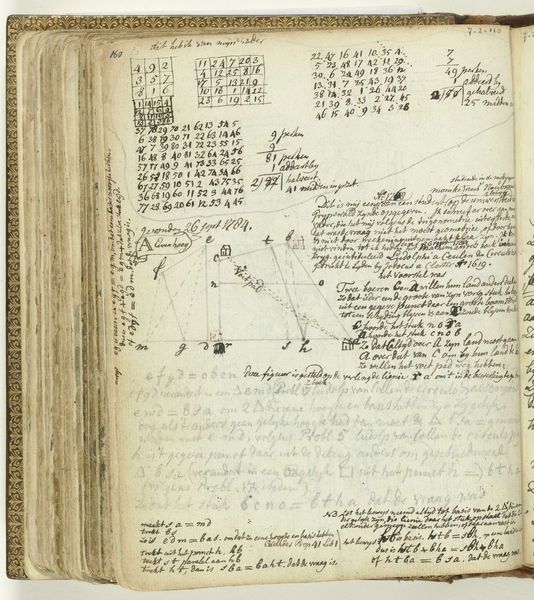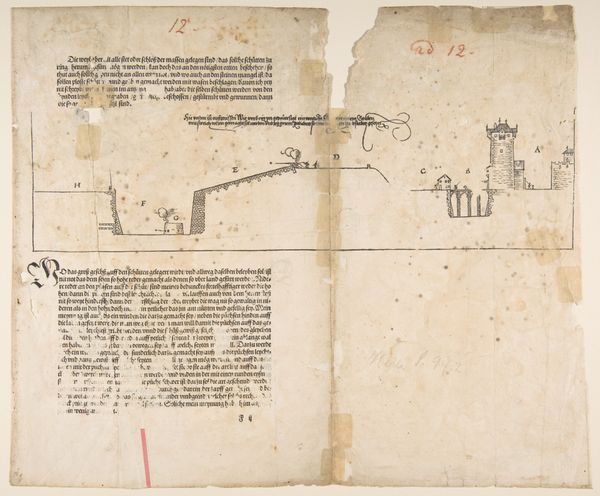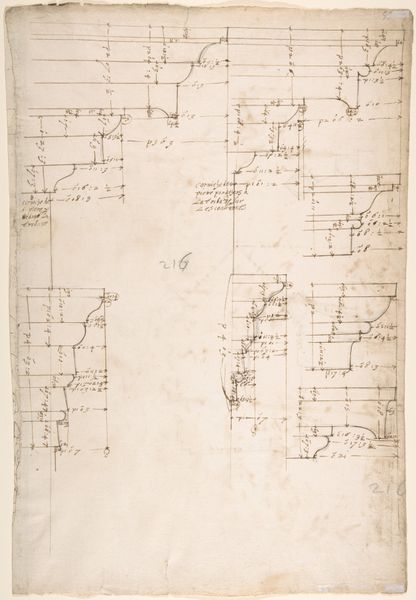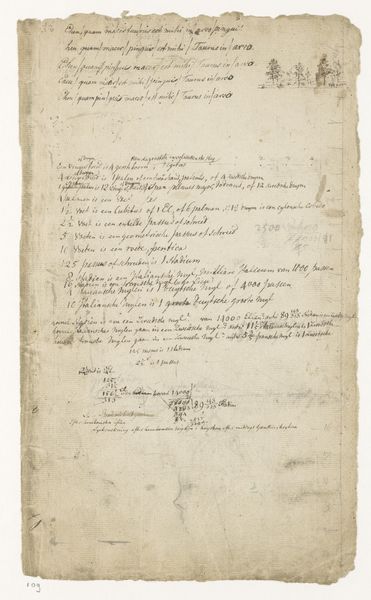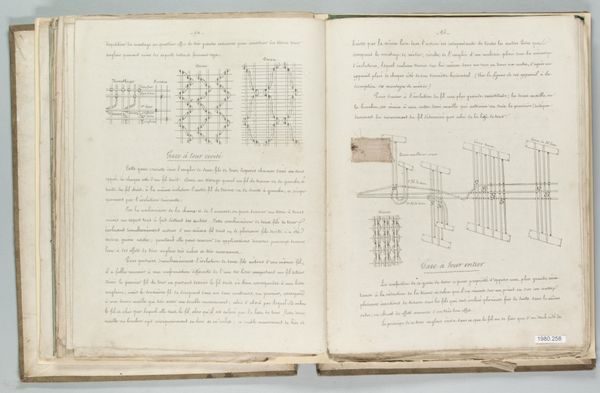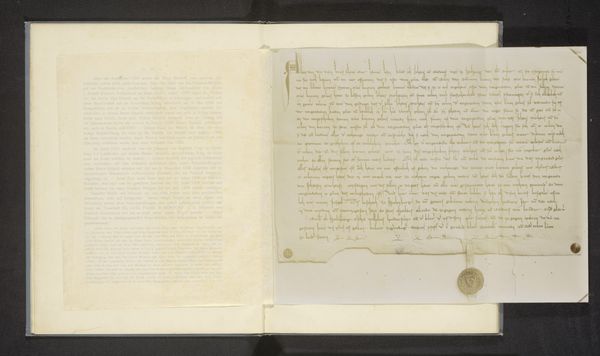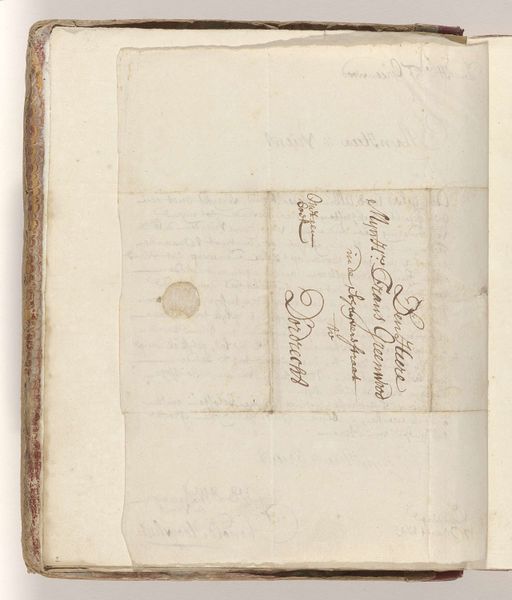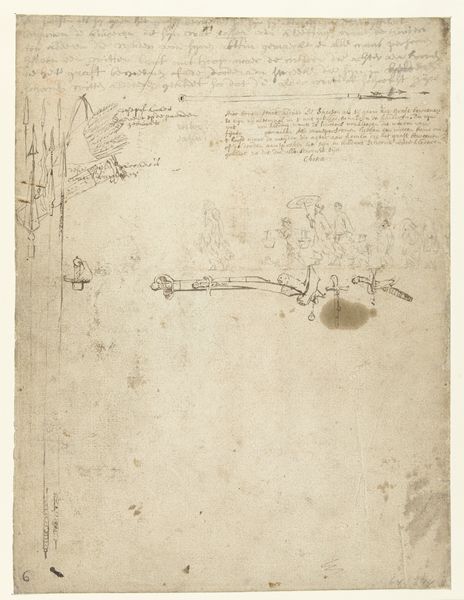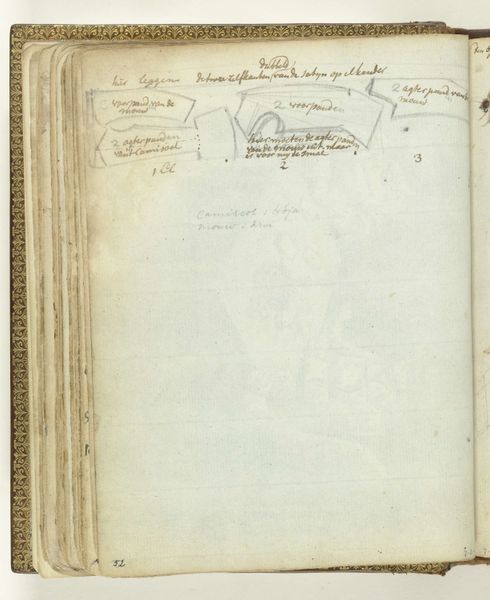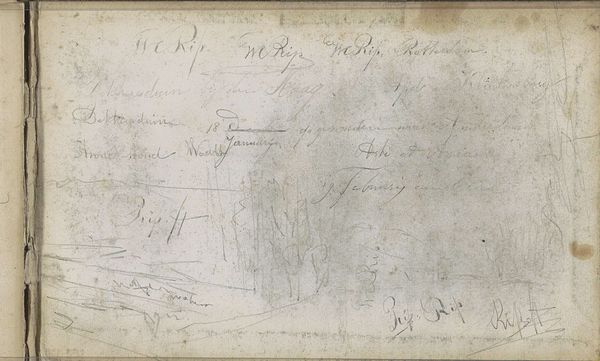
drawing, paper, pencil
#
drawing
#
aged paper
#
toned paper
#
landscape
#
perspective
#
paper
#
tea stained
#
personal sketchbook
#
geometric
#
pencil
#
ink colored
#
sketchbook drawing
#
watercolour bleed
#
watercolour illustration
#
academic-art
#
sketchbook art
#
watercolor
Dimensions: height 335 mm, width 405 mm
Copyright: Rijks Museum: Open Domain
Editor: We’re looking at “Perspectiefstudies,” or Perspective Studies, a drawing by Jan Brandes made sometime between 1787 and 1808. It appears to be ink and pencil on paper, and what strikes me first is the density of lines and geometrical shapes on the aged paper. It feels very academic. What do you see in this piece? Curator: Indeed. My attention is immediately drawn to the interplay of geometric forms and the calculated organization on the page. Observe how Brandes employs line— thin, precise, and rigorously controlled—to delineate spatial relationships. Notice also the deployment of textual annotations amidst the geometric figures, not as supplementary explanations but as integral compositional elements. How do they interact, visually? Editor: I see the writing almost functions like another type of line, creating a texture with the drawings. I am also noticing that it seems Brandes wasn't really concerned about the presentation as such. It feels raw. Curator: Precisely. The so-called "rawness" that you observe suggests that it's the methodology and scientific approach what mattered to Brandes here. Semiotically, it can be argued that the forms constitute a vocabulary of spatial logic. Note, in particular, the recurrent use of triangles. Editor: Now that you mention it, I am more aware of all of the geometric forms. Does this particular structure carry any symbolic meaning? Curator: From a Formalist standpoint, the potential symbolic resonance is secondary to its formal function: the creation of spatial depth on a two-dimensional surface. It is primarily a compositional strategy rather than a symbolic gesture. The goal isn’t symbolism; it’s structure. The intrinsic relationships of shape and text and paper. Does examining it this way help you perceive what interested the artist? Editor: Yes, definitely. Focusing on composition and materials makes me see the piece as a study of form rather than a representation. Thanks! Curator: A pleasure. Seeing the world through the language of form, and its infinite variations, illuminates even the simplest of sketches.
Comments
No comments
Be the first to comment and join the conversation on the ultimate creative platform.
